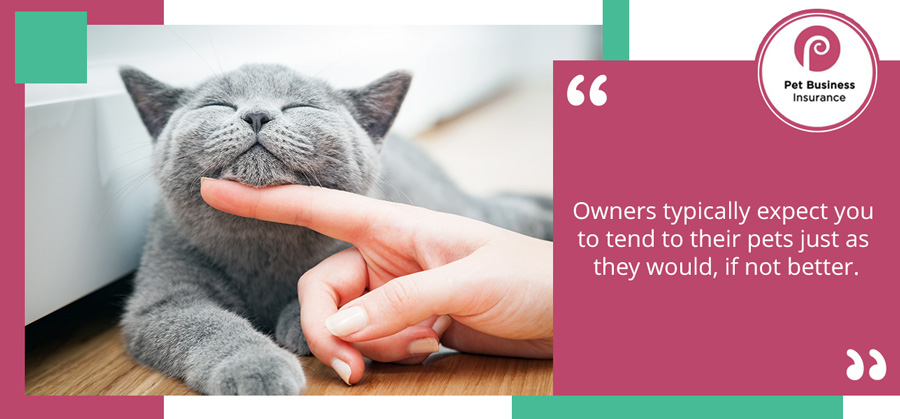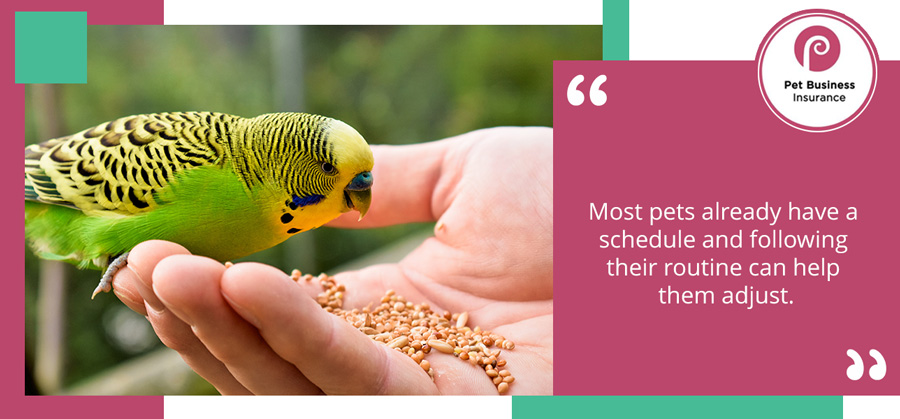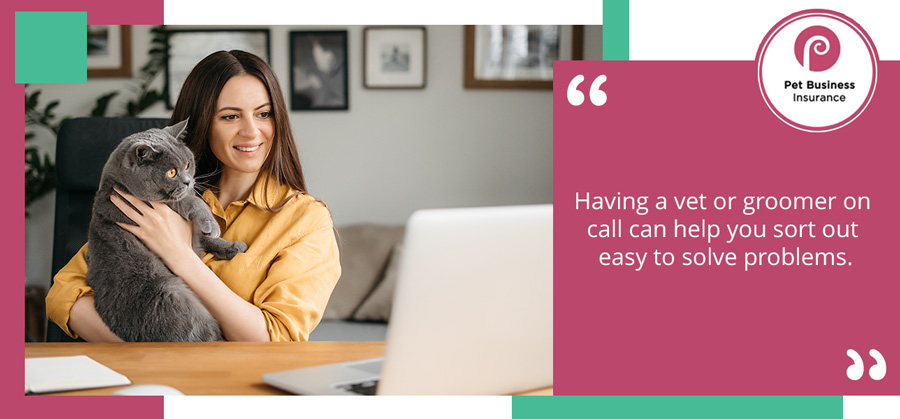
Pet sitting involves caring for someone's pet while they are not around and can either be done in their own homes or in the owner's home. Owners typically expect you to tend to their pets just as they would, if not better.
Here are a few tips that can help you provide a great service as a pet sitter:
1. Become familiar with different types of animals
If you're an animal lover and have grown up around animals, you have an advantage over people that only had a childhood dog. If possible, take pet CPR courses to learn essential techniques that will help you with animal care.
It’s essential to learn what is toxic to different pets. For example, some of the poisonous foods for dogs and cats include:
- chocolate
- raisins
- walnuts and macadamia
- yeast dough
- avocado skin
- xylitol including gums and candy
- caffeine
- onions
- garlic
- alcohol
Animals can also react badly to different house plants, essential oils or fragrances, and can even be allergic to soaps and detergents that you use on household products.

2. Offer additional services
Besides caring for the pet, you may also be able to take care of the owner's home. Be the ear and the eyes of the house. Clean after yourself and the pet. You can often charge for additional services if owners need plants to be watered, parcels to be brought in, or other house-sitting duties that you can perform while pet sitting in an owner’s home.
3. Meet the Pet Before the Actual Job
Familiarise yourself with the animal and their environment, if you’ll be pet sitting at the owner’s home. During this visit, familiarise yourself with the pet and learn when it eats, drinks, and their routine. A short visit allows you to get to know an animal better, preparing you in case the pet's parent leaves some details out in your briefing. Also, bonding with the pet encourages the owner and gives them peace of mind, having left their loved ones in your watch. If you notice any red flags like aggression, consider turning the job down since these traits can escalate in a different environment.
Top tip: Bring a detailed form to the visit for the owner to fill out with their pet’s details. This way you can ask any follow-up questions ahead of time.
4. Follow a Schedule
Most pets already have a schedule and following their routine can help them adjust. Follow the written and verbal instructions left by your customer, including the right way to medicate, feed, or reprimand their pet.

5. Be Compassionate
Pets notice when their owner is not around and can get nervous. Giving the animal extra attention can help, but so can giving them space to adjust. Understanding different signals and what a pet is trying to tell you through their communication method will help give you insight into their preferences.
6. Pet Proof Your House
Even when a pet is trained, a new environment can cause them to have accidents. That's why, if you're caring for a pet from your home, you need to pet-proof the house. Here are some considerations:
- Install a door protector to prevent scratches from dogs
- Pet proof furniture and other toys in your house that encourage cats or dogs to scratch or chew
- Keep all food, treats and medications securely enclosed
- Limit pets to areas using baby gates if needed
- Keep crates away from other items so animals like birds don’t make a mess on surroundings or so puppies don’t pull items into the crate to chew
Top tip: Make sure pets don’t have fleas or communicable diseases before taking them to your house.
7. Communicate
Nothing makes a pet owner feel better than seeing their pet well-fed and groomed. Take at least one picture a day and send it to the pet parent with a quick status update. Relay information about the pet, including anything regarding their health, in a prompt and timely manner.
8. Learn When to Say No
It's easier to make careless mistakes when you're overbooked. When someone delegates their responsibility of caring for a pet, they expect you to fulfil your part. Unfortunately, you can't do this when you have too many pets to care for. Compromising the care you give might jeopardise you or your pet's health. Recognize your limit and identify how many pets you can manage without your attention or care slipping.
9. Know What You Can Offer
It's tempting to fulfil your clients' every need but it’s equally as important to turn down a pet sitting assignment if pets are not a match or if you're inexperienced.
Determine whether the pet assignment will constrain you physically, financially, and professionally and decide whether to do it or pass.
10. Have a Strong Support System
You can't call the pet owner every time you face a minor problem. That's where networking with other pet sitters comes in handy – it helps you deal with any issues that may arise. In these networks, you'll probably find someone who went through the same problem and is willing to help.
Having a vet or groomer on call can help you sort out easy to solve problems without troubling an owner. It allows you to establish procedures and policies necessary for running a smooth pet sitting business.

Can I Make Money Pet Sitting?
Yes, you can make money by pet sitting. It can be a great opportunity for students with a flexible schedule or for remote workers looking for a second income stream. To earn a high income, you need to develop a business model that stands out from competitors and target the right area and market.
What Should I Charge for Pet Sitting?
There are a lot of factors that go into pet sitting rates. What you charge can vary depending on:
- Location
- In-home or out-of-home
- Duration
- Complexity
- Pet type
- Pet needs
- Required skill level
- Competitors
In the UK, average pet sitting costs are around £25 for overnight stays while hourly rates are usually between £10-15 during the day. Again, this is just a base rate that can fluctuate largely. It’s best to establish a base rate and then negotiate with pet owners to give them their customised rate based on their pet care needs.